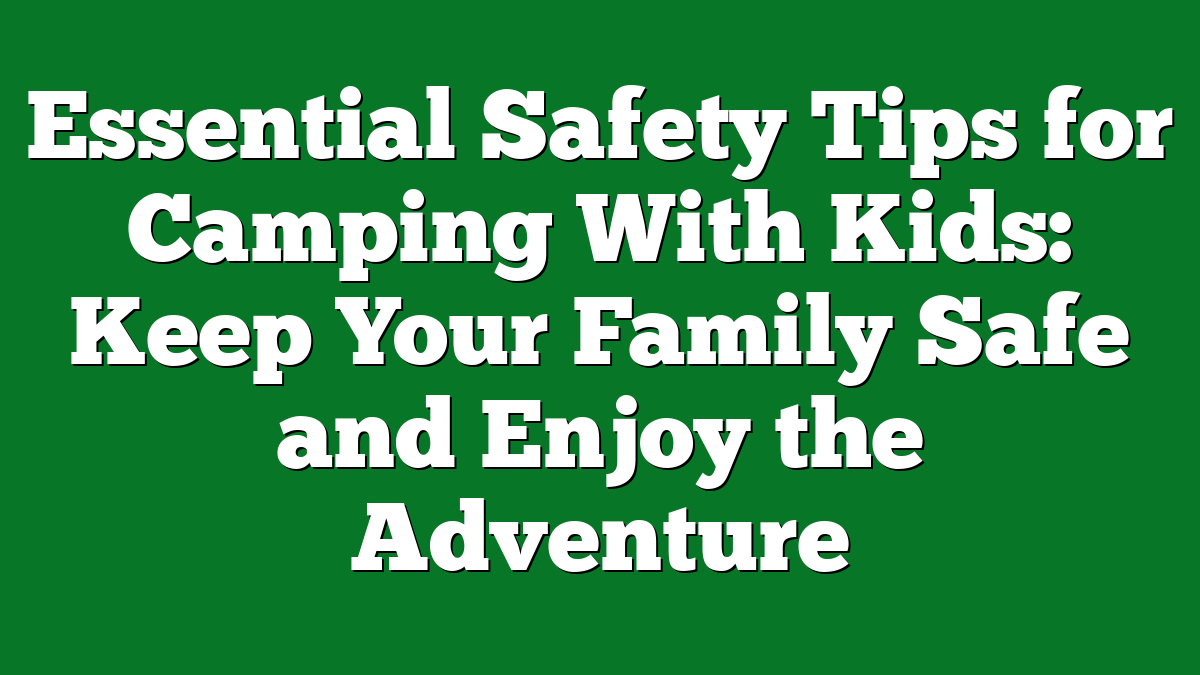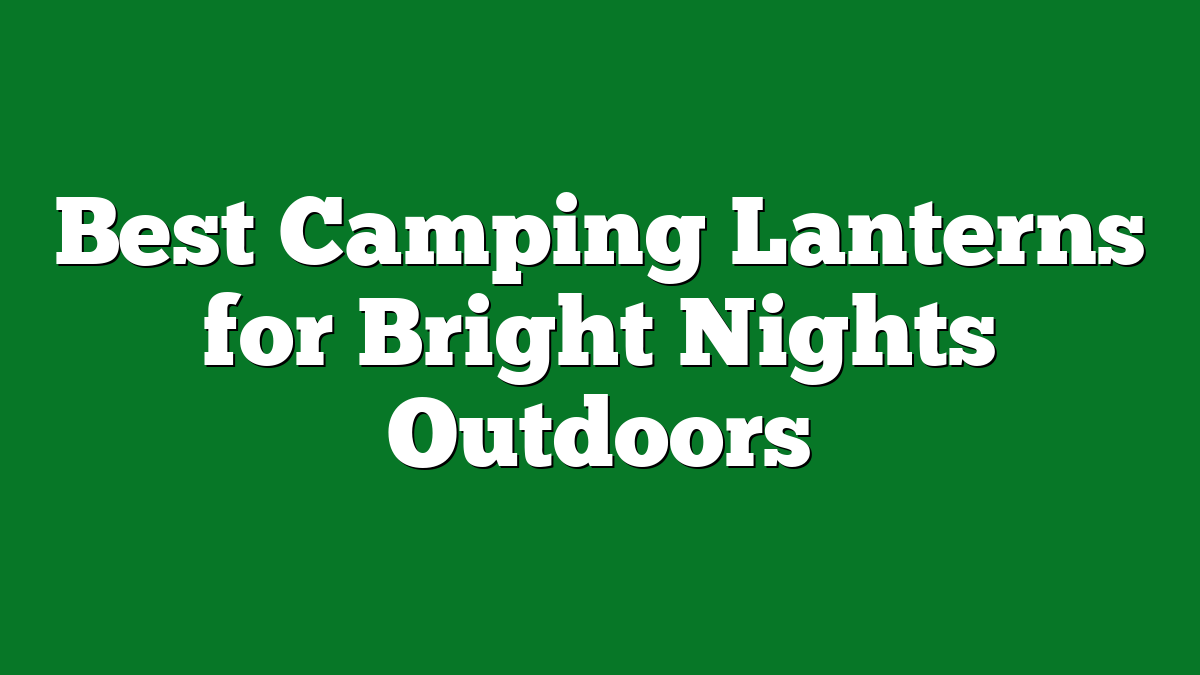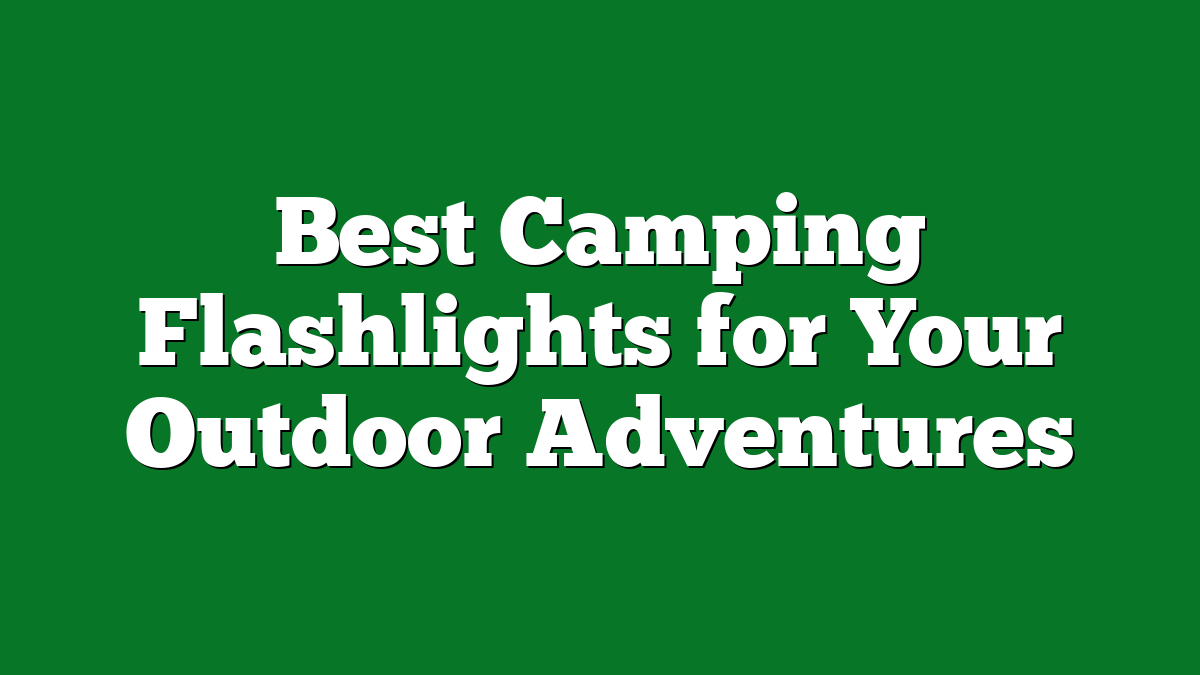Camping with kids can be one of the most rewarding experiences, but it also comes with its own set of challenges. I’ve discovered that ensuring safety is key to making those family adventures enjoyable and memorable. From the thrill of roasting marshmallows to the joy of exploring nature, it’s important to keep our little ones safe while they soak in all the wonders of the great outdoors.
Preparing for Your Camping Trip
Preparing for a camping trip with kids requires careful planning and thought. I focus on two key aspects: choosing the right campsite and planning engaging activities that ensure everyone enjoys their time outdoors.
Choosing the Right Campsite
Choosing the right campsite sets the tone for a successful family adventure. I look for sites that are kid-friendly, accessible, and safe. My top considerations include:
- Proximity to Amenities: I prefer campsites near restrooms and water sources to make life easier for the kids.
- Level Ground: I always search for flat, even terrain for setting up tents. This helps prevent accidents during nighttime shifts.
- Natural Barriers: I find sites with natural barriers like trees or bushes, which can provide a buffer from wind and enhance safety.
- Wildlife Considerations: I pick locations away from animal trails and dens to minimize encounters with wildlife.
Planning Activities for Kids
Planning activities ensures the kids remain engaged and excited about camping. I often prepare a mix of educational and fun activities, such as:
- Nature Scavenger Hunt: I create a simple list of items, like specific leaves or rocks, for kids to find. This keeps them exploring and learning.
- Campfire Stories: I encourage storytelling around the campfire, letting the kids use their imagination while bonding over shared experiences.
- Outdoor Games: I pack supplies for games like frisbee or capture the flag, which get everyone moving and laughing.
- Fishing and Hiking: I plan short hikes and fishing trips suitable for kids, introducing them to basic outdoor skills and skills.
By focusing on these steps during preparation, I ensure our camping trips are memorable, safe, and fun for the entire family.
Essential Safety Gear
Equipping my family with the right safety gear enhances our camping experience, ensuring we’re prepared for anything the great outdoors throws at us. Here are the essentials every camping trip should include.
First Aid Kit Essentials
A well-stocked first aid kit acts as the backbone of our safety preparations. I always include items like adhesive bandages, antiseptic wipes, gauze pads, and medical tape. I also make sure to pack pain relievers like ibuprofen or acetaminophen for headaches or minor discomforts. For added safety, I include tweezers for splinter removal, hydrocortisone cream for insect bites, and a thermometer to monitor any fevers. I even toss in a First Aid manual for quick reference. Regularly checking and replenishing the kit keeps it ready for emergencies.
Appropriate Clothing and Footwear
Choosing the right clothing and footwear proves essential for comfort and safety on any camping trip. I ensure my kids wear moisture-wicking base layers that keep them dry. Layering helps manage temperature, so I pack lightweight, long-sleeved shirts and durable pants. It’s crucial to protect their skin from sun exposure, so I include wide-brimmed hats and sunglasses. Footwear needs to be sturdy yet comfortable; I opt for well-fitted hiking boots that provide support and traction. Waterproof jackets and pants are also vital, making sure we stay dry during unexpected rainfalls.
Teaching Kids About Camping Safety
Teaching kids about camping safety builds confidence and ensures enjoyable outdoor adventures. I’ve found that involving them in discussions about safety makes them more aware and responsible.
Fire Safety Guidelines
- Explain fire basics – I explain to my kids how fires work and the importance of keeping a safe distance. They learn that even small flames can quickly become a hazard.
- Establish a safety zone – I set up a clear perimeter around the fire pit. I ensure they know that this area is off-limits, promoting a safe space.
- Supervise always – I remind my kids they should never approach the fire without an adult present. I stress the need for constant supervision when flames are involved.
- Teach extinguishing methods – I show them how to properly put out a campfire. I make sure they understand the importance of pouring water over the ashes until they are cool to the touch.
- Avoid flammable materials – I explain that it’s essential to keep combustible items away from the fire. This includes blankets, clothing, and food wrappers.
Wildlife Safety Tips
- Educate about local wildlife – I introduce my kids to the local animals we might encounter. We discuss which creatures are safe and which to avoid, like bears and snakes.
- Proper food storage – I show them the importance of storing food correctly. We always keep our goods in bear-proof containers or hung up high in a tree.
- Keep a safe distance – I teach my kids to observe wildlife from afar. I explain that approaching animals can provoke them and lead to dangerous situations.
- Recognize signs of danger – I point out signs of wildlife activity, like tracks and droppings. They learn to respect these signs and understand the need to steer clear.
- Practice loud noises – I encourage my kids to be loud while hiking, especially in areas where wildlife is active. Making noise helps prevent surprising animals and keeps us safer in the wild.
Staying Vigilant in the Outdoors
Staying alert and aware while camping with kids ensures a safer, more enjoyable experience. I always emphasize the importance of vigilance in the outdoors.
Setting Boundaries for Kids
Setting clear boundaries helps kids understand their limits and enhances safety. I establish a designated play area near the campsite, ensuring it’s away from water and steep terrain. I clearly explain that they should stay within sight of the campsite and avoid wandering off alone. Reinforcing these rules frequently fosters a sense of security and awareness of their surroundings. Using markers like rocks or sticks to outline the boundary can assist younger children in visualizing their play area.
Keeping an Eye on Weather Conditions
Monitoring weather conditions is crucial for outdoor safety. I check forecasts before the trip and remain vigilant during our stay. Changes in temperature, wind patterns, or dark clouds can signal approaching storms. If I notice any signs of inclement weather, I gather the family and move to a safe location. I also pack appropriate gear for various weather conditions—like ponchos for rain or warm layers for cold evenings—ensuring my family stays comfortable regardless of what nature throws our way. Frequent discussions about safety during changing weather enhance kids’ understanding of being adaptable and prepared.
Family Emergency Plans
Planning for emergencies ensures that the camping experience remains enjoyable and safe for my family. Establishing a clear emergency plan keeps everyone informed and ensures effective communication during unforeseen situations.
Creating a Communication Plan
I always set up a communication plan before heading out, so my family knows how to reach each other if we get separated. I identify meeting points, such as a distinct tree or a specific campsite feature, in case anyone wanders off. I also assign one adult to carry a fully charged phone for emergencies, even if service may be limited. Before the trip, I teach my kids how to use a whistle, signaling a call for help, and I discuss emergency contact numbers. Making this plan together not only helps kids feel secure, but it also builds their confidence.
Knowing When to Seek Help
I highlight the importance of recognizing when to seek help during our outings. I explain to my kids that they shouldn’t hesitate to approach other campers or park rangers if they feel unsafe or lost. Identifying common signals, like waving or shouting, creates a sense of urgency that helps them understand when it’s time to act. I also encourage them to trust their instincts—if something feels off, seeking assistance is the right choice. Training my family on these principles builds their awareness and keeps everyone safer while enjoying the outdoors.
Conclusion
Camping with kids can be an incredible adventure filled with laughter and learning. By prioritizing safety and preparation, I can create lasting memories while keeping my family protected. It’s all about finding the right campsite, planning fun activities, and ensuring everyone knows the safety rules.
Equipping my family with the right gear and teaching them how to handle emergencies makes all the difference. I love the idea of fostering a sense of responsibility in my kids, helping them feel confident in the great outdoors.
With a little planning and awareness, our camping trips can be both safe and enjoyable. Here’s to many more family adventures under the stars!











